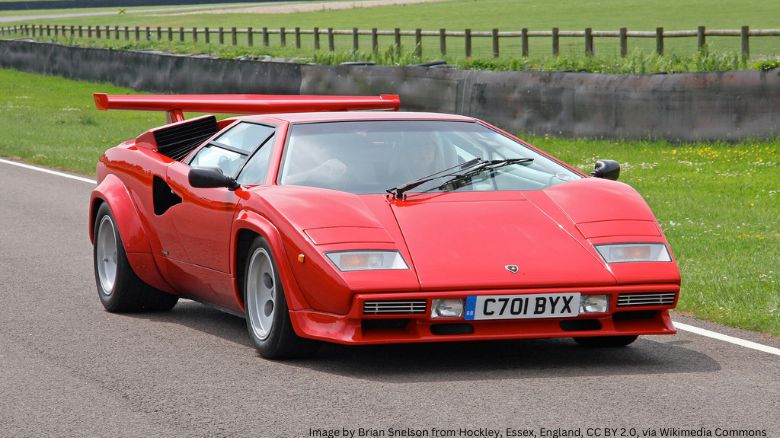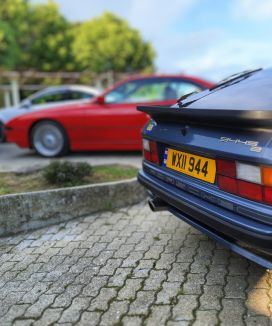Iconic Cars That Defined Each Decade: 1960s to 2000s
Table of Contents
The automotive industry has always been a reflection of broader cultural and technological trends. Each decade, new cars roll off the assembly lines and into our lives, bearing the distinct imprint of the era they emerge from.
From the raw power and classic designs of the 1960s to the environmentally conscious creations of the 2000s, cars tell a story of changing times and shifting values.
The journey from the 1960s to the 2000s is a thrilling ride through evolving aesthetics, groundbreaking innovations, and the indelible spirit of adventure that drives human ingenuity.
As we race back in time, we’ll explore the iconic cars that not only defined their respective decades but also captured the imagination of generations.
So, buckle up as we accelerate through the decades, exploring the iconic cars that roared through the streets in each era, and cruised into the annals of automotive history.
1960s: The Birth of Muscle and Style
The 60s, a decade brimming with change, saw cars morphing from mere modes of transport to statements of identity.
Amidst the soundtrack of rock ‘n’ roll, the roar of engines resonated through the streets, announcing the arrival of muscle cars and suave European sports cars.
Ford Mustang: The Mustang galloped into the scene in 1964, igniting a fire in the hearts of car enthusiasts. It wasn’t just a car; it was a dream on wheels, affordable yet powerful.

With its sporty design, it appealed to the youth, offering a taste of rebellion and freedom. Sales skyrocketed, with over 400,000 units sold in the first year.
The Mustang wasn’t merely a car; it was a cultural icon that spurred a new market, the pony car race, with competitors galloping to catch up.
Jaguar E-Type: Across the pond, the Jaguar E-Type purred softly yet made a loud statement. Launched in 1961, its sleek design and high performance were nothing short of revolutionary.

Enzo Ferrari called it “the most beautiful car ever made.” It wasn’t just eye candy; its top speed of 150 mph and a 0-60 acceleration of under 7 seconds made it a marvel of British engineering.
Chevrolet Camaro: The Camaro roared to life in 1966, Chevrolet’s riposte to the Mustang. It was fierce, with a design that promised speed and power.
The Camaro became another emblem of American muscle, offering a blend of performance and style that was hard to beat.

The 60s automotive scene was more than an era; it was a spectacle. Cars were no longer just about getting from point A to B; they were about making a statement while doing so.
The Ford Mustang, Jaguar E-Type, and Chevrolet Camaro were not just modes of transport; they were the heartbeats of the 60s, pulsing through the veins of a generation ready to steer the wheel of change.
1970s: Practicality Meets Performance
As the 70s dawned, the automotive world found itself at a crossroads. The fuel crisis beckoned a new era of efficiency, yet the love for speed and performance roared louder than ever.
It was a decade where practicality courted performance, giving birth to legends on wheels.
Volkswagen Golf: The Golf drove into the 70s with a promise of frugality without compromising fun. It was the answer to the fuel crisis – compact, economical, yet spirited.

The birth of the Golf GTI saw the inception of the hot hatch genre, blending everyday usability with a zest for speed.
With its friendly price tag, the Golf wasn’t just a car; it was a friend to the masses during turbulent times.
Lamborghini Countach: In stark contrast, the Countach was Italy’s audacious flirt with the extreme. Launched in 1974, its wedge-shaped design and scissor doors were a passport to the future.

It was a statement, a wild imagination brought to life. With a top speed of nearly 200 mph, it defied the era’s call for restraint, rewriting the supercar narrative.
Pontiac Firebird Trans Am: The Trans Am was America’s retort to a world inching towards practicality. Its bold design and the iconic screaming chicken decal were unapologetic.
It was a car that didn’t just drive; it soared, encapsulating the enduring American spirit of freedom and power.

The 70s was a canvas painted with the contrasting strokes of practicality and performance.
From the humble lanes of everyday commute to the flamboyant fast lanes of imagination, cars like the Golf, Countach, and Trans Am traversed this spectrum, etching the 70s as a pivotal chapter in automotive lore.
1980s: The Tech-Savvy and Design-Centric Era
The 80s ushered in an era where the automotive industry embraced the burgeoning digital age.
Cars weren’t just machines of metal and rubber; they became canvases of innovation and design. It was a decade where car makers dared to dream, blending cutting-edge technology with audacious designs.
DeLorean DMC-12: The DeLorean was the epitome of 80s flamboyance. With its gull-wing doors and stainless-steel body, it seemed to have driven straight out of a sci-fi flick.

Though its production was fleeting, its iconic status was immortalized by the “Back to the Future” franchise.
The DMC-12 wasn’t just a car; it was a cultural phenomenon that zoomed beyond the mundane, straight into the realms of imagination.
BMW E30 M3: The 80s also saw the rise of performance compact cars, and the BMW E30 M3 was a trailblazer. It was the perfect marriage of precision engineering and driving pleasure.

With its race-bred DNA, the M3 didn’t just navigate roads; it danced on them, embodying a blend of performance, style, and innovation that was quintessentially 80s.
Honda CRX: The Honda CRX was the answer for those who sought fuel efficiency without sacrificing the joy of driving.
It was petite, yet packed a punch. Its design was compact, but its performance was excellent.

The CRX was a testament to the 80s ethos of delivering more with less, proving that small could indeed be mighty.
The 80s was a decade where the realms of technology and design intertwined on the automotive stage, giving birth to cars that were as visually captivating as they were technologically advanced.
Through the DeLorean’s futuristic allure, the M3’s performance pedigree, and the CRX’s compact charisma, the 80s automotive scene was a fascinating blend of form and function, a harbinger of the tech-centric automotive landscape that was to unfold.
1990s: The Supercar and Tuner Culture Boom
The 90s revved in with a roar that echoed the birth of a new automotive epoch. It was a time when the allure of speed flirted with the blossoming tuner culture, creating a marriage of elegance, power, and personal expression.
The streets hummed with the rhythm of supercars and the unique tunes of modified rides.
McLaren F1: The 90s saw the dawn of the McLaren F1, a machine that didn’t just drive, it flew. With a top speed of 240 mph, it wore the crown of the fastest car for years.

It wasn’t merely a car; it was a marvel of British engineering, a symbol of what happens when boundaries are pushed.
Its center-seated driving position and gold-lined engine bay were a nod to a future the automotive world was speeding towards.
Toyota Supra: The Supra became synonymous with the tuner culture that blossomed during the 90s. Its robust 2JZ engine was a canvas for modifiers, a heart that could endure turbocharged beatings, propelling it to speeds that blurred the lines of reality.

The Supra didn’t just drive; it roared, embodying the spirit of a culture that believed in the personalization of performance.
Dodge Viper: The Viper was America’s fierce whisper in the supercar saga. Its menacing design and ferocious V10 engine were unapologetically bold.
It was a car that didn’t believe in subtlety; it believed in making a statement, a loud one.

The Viper was a raw, unadulterated expression of power, a nod to a past where cars were untamed beasts, yet a stride into a future where performance knew no bounds.
The 90s was an era that saw the crescendo of automotive expression reach new octaves. It was a time of supercars that pushed the envelope of speed and design, and of a tuner culture that added a personal note to the automotive symphony.
The McLaren F1, Toyota Supra, and Dodge Viper were not merely cars; they were the heartbeats of a generation that believed in the beauty of speed and the power of personal expression.
2000s: The Rise of Modern Classics and Environmental Awareness
As the calendar flipped into the 2000s, the automotive world stood at the cusp of tradition and modernity.
Cars began donning retro attire with a tech-savvy heart, while a green conscience started steering the wheels of innovation.
It was a time when the roar of engines harmonized with the whisper of electric dreams.
Toyota Prius: The Prius rolled quietly into the noisy world of cars, its hybrid heart beating a rhythm of change.

Launched in 2004, the second-generation Prius was a gentle nudge to the gas-guzzlers, showcasing a path of fuel efficiency amidst rising fuel prices.
It wasn’t just a car; it was a statement, a new leaf in the automotive saga.
Ford GT: The Ford GT was a nostalgic nod to the glorious past, clad in modern marvel. Unveiled in 2005, it bore a retro design reminiscent of the legendary GT40, yet its performance was anything but old-fashioned.

It was a celebration of a century-old legacy, blended with contemporary engineering, a bridge between the yesteryears and the tomorrow.
Audi R8: The R8 zoomed in with a blend of elegance, performance, and modern tech. Launched in 2006, it was Audi’s leap into the supercar realm.
Its slick design and roaring V8 were a heartbeat that resonated with both purists and modernists.

The R8 was more than a car; it was Audi’s bold statement in the high-performance narrative.
The 2000s were a fusion of the classic and the contemporary, the eco-conscious and the performance-hungry.
Cars like the Prius, Ford GT, and Audi R8 were symbols of this transformative era, each a unique narrative in the unfolding story of automotive evolution.
Reflecting on the Journey
Our nostalgic cruise down the automotive memory lane unveils more than just the evolution of metal beasts; it reveals a riveting narrative of societal shifts, technological leaps, and the indomitable spirit of innovation.
Each decade, with its iconic cars, tells a tale of the times, a reflection of our aspirations, fears, and the relentless quest for progress.
The cars we explored weren’t merely machines; they were the harbingers of change, the embodiments of dreams revved into reality.
From the rebellious roar of the Mustang to the quiet resolve of the Prius, the automotive journey is a mesmerizing saga of how we’ve navigated the delicate shift between desire and necessity, tradition and innovation.
Share your thoughts in the comments on other iconic cars that have left tire marks on your heart.
Your insights are the fuel that propels this conversation forward, sparking ideas that could very well drive the next iconic creation on the road of tomorrow.
ABOUT THE AUTHOR
Adam Chinn writes about the intersecting worlds of classic cars, driving pleasure, and smart investment strategies. Starting his journey at 26, he’s proven that one doesn’t need to be wealthy to begin investing in classic cars.
Adam’s insights have been recognized on platforms such as MoneyInc, Swagger Magazine, and Top Speed.
Your journey to smarter car investments starts here.
The latest classic car data analysis, news, and expert articles delivered straight to your inbox.
- Take the guesswork out of classic car investing
- Get the tools and strategies you need to take action
- Learn the market inside-out
- Make informed decisions with confidence
Register now to see the best and worst performers, every month
You can unsubscribe at any time




